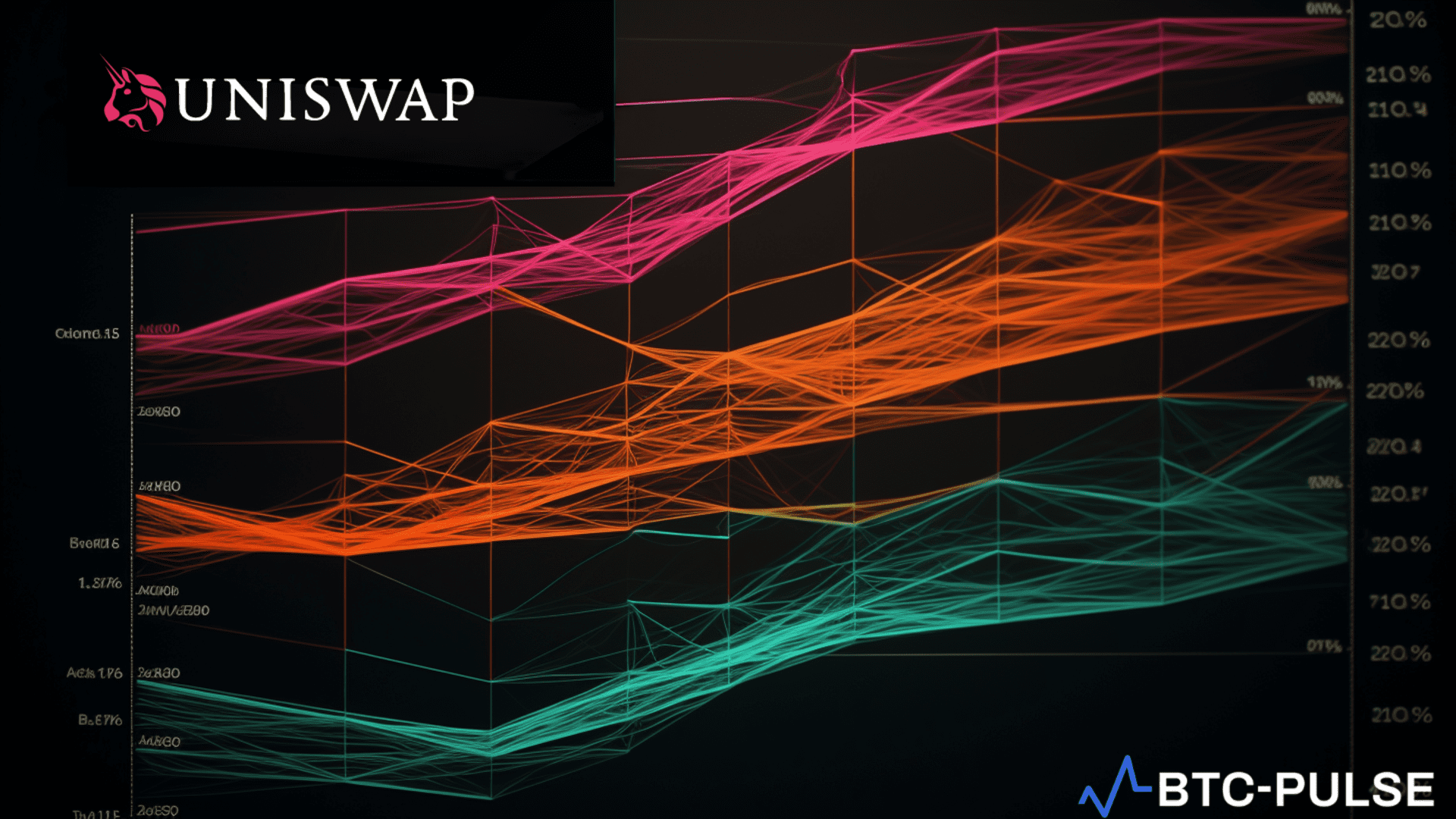Uniswap Study Shows Layer 2 Networks Offer Cheaper Transactions Than Ethereum

A recent study conducted by Austin Adams from Uniswap Labs has shed light on the cost benefits of conducting transactions and providing liquidity on layer-2 networks as opposed to Ethereum’s mainnet. This research emphasizes the significant advantages that layer-2 solutions hold, especially for retail traders seeking lower transaction fees and more efficient liquidity provisions.
A Deep Dive into Networks Cost Efficiency
The research paper specifically lauds Arbitrum for its remarkable success in amassing over triple the liquidity positions than Ethereum has in the past year. For transactions under $125,000, an overwhelming 97.5% were found to be cheaper on layer-2 networks, attributed to reduced gas costs and a higher concentration of liquidity which favor the retail trading demographic.
Despite Ethereum hosting 25% of total blockchain transactions, it accounts for more than 60% of the transaction volume. This suggests a distinct preference among users for layer-2 networks due to their lower cost structure, despite Ethereum’s larger volume of transactions.
Benefits Beyond Costs
Aside from cost benefits, layer-2 networks like Arbitrum are also known for their significantly reduced block times. This reduction narrows the opportunity for price fluctuation within the market, making arbitrage strategies less lucrative. Such a dynamic is advantageous for liquidity providers on layer-2 networks, who, according to the study, enjoy 20% higher returns from arbitrage compared to their counterparts on the Ethereum mainnet.
Addressing Layer-2 Concerns
However, the study does not shy away from discussing the potential pitfalls associated with layer-2 networks. It points out the presence of centralized sequencers that could potentially manipulate transactions to their benefit. Additionally, the lack of decentralized fraud proofs in optimistic rollups, which are essential for rectifying errors, poses a significant concern.
The proliferation of over 40 layer-2 ecosystems has led to the fragmentation of liquidity. This necessitates reliance on bridging infrastructure, which is both costly and time-consuming, potentially hampering the seamless experience users seek.
In response to these challenges, developers across the ecosystem are making strides toward solutions. For instance, Optimism has introduced a permissionless fault-proof system, and there are ongoing efforts like Espresso aimed at diversifying sequencer networks to enhance security and decentralization.
Looking Forward
Austin Adams succinctly encapsulates the essence of the ongoing developments and research in the decentralized finance (DeFi) space, stating, “For decentralized markets to fulfill their full potential, aggregate trading costs must continue to decline, and user experience must continue to improve.” He remains optimistic about the current and future benefits layer-2 networks bring to the table, emphasizing that ongoing enhancements will further enrich the trading experience for users worldwide.
Read More

Hong Kong Unveils Crypto Staking Rules, Reinforces Web3 Commitment
Uniswap Study Shows Layer 2 Networks Offer Cheaper Transactions Than Ethereum

A recent study conducted by Austin Adams from Uniswap Labs has shed light on the cost benefits of conducting transactions and providing liquidity on layer-2 networks as opposed to Ethereum’s mainnet. This research emphasizes the significant advantages that layer-2 solutions hold, especially for retail traders seeking lower transaction fees and more efficient liquidity provisions.
A Deep Dive into Networks Cost Efficiency
The research paper specifically lauds Arbitrum for its remarkable success in amassing over triple the liquidity positions than Ethereum has in the past year. For transactions under $125,000, an overwhelming 97.5% were found to be cheaper on layer-2 networks, attributed to reduced gas costs and a higher concentration of liquidity which favor the retail trading demographic.
Despite Ethereum hosting 25% of total blockchain transactions, it accounts for more than 60% of the transaction volume. This suggests a distinct preference among users for layer-2 networks due to their lower cost structure, despite Ethereum’s larger volume of transactions.
Benefits Beyond Costs
Aside from cost benefits, layer-2 networks like Arbitrum are also known for their significantly reduced block times. This reduction narrows the opportunity for price fluctuation within the market, making arbitrage strategies less lucrative. Such a dynamic is advantageous for liquidity providers on layer-2 networks, who, according to the study, enjoy 20% higher returns from arbitrage compared to their counterparts on the Ethereum mainnet.
Addressing Layer-2 Concerns
However, the study does not shy away from discussing the potential pitfalls associated with layer-2 networks. It points out the presence of centralized sequencers that could potentially manipulate transactions to their benefit. Additionally, the lack of decentralized fraud proofs in optimistic rollups, which are essential for rectifying errors, poses a significant concern.
The proliferation of over 40 layer-2 ecosystems has led to the fragmentation of liquidity. This necessitates reliance on bridging infrastructure, which is both costly and time-consuming, potentially hampering the seamless experience users seek.
In response to these challenges, developers across the ecosystem are making strides toward solutions. For instance, Optimism has introduced a permissionless fault-proof system, and there are ongoing efforts like Espresso aimed at diversifying sequencer networks to enhance security and decentralization.
Looking Forward
Austin Adams succinctly encapsulates the essence of the ongoing developments and research in the decentralized finance (DeFi) space, stating, “For decentralized markets to fulfill their full potential, aggregate trading costs must continue to decline, and user experience must continue to improve.” He remains optimistic about the current and future benefits layer-2 networks bring to the table, emphasizing that ongoing enhancements will further enrich the trading experience for users worldwide.
Read More

